Abstract 5/2013
Table of content
Olgierd Wyszomirski – Trolleybus transport functioning in the Trolley Project partnership cities
Elzbieta Załoga, Zuzanna Kłos-Adamkiewicz – Value of services for passengers in the light of research in regional transport
Lidia Żakowska – Perception of the transport space as determinants of the safety in the sustainable road transport concept in Europe
Maciej Florczak – Gis as an tool in analysis of spatial accessibility of the public transport system
Beata Zagożdżon – Effects of the UE transport policy in terms of external costs
Andrzej Rogowski – Sensitivity analysis of power model of road accidents in Poland
Abstracts
Olgierd Wyszomirski
Trolleybus transport functioning in the Trolley Project partnership cities
Abstract: The Trolley Project dedicated to the promotion of trolleybus as an ecological and economically effective mode of transport in Central Europe’s regions and cities was realized between years 2010 –2013 within the framework of the European Commission project “INTERREG Central Europe” with the dominant contribution of the European Regional Development Fund. The partnership cities of the Trolley Project in which trolleybuses are being operated are Brno, Eberswalde, Gdynia, Parma, Salzburg and Szeged. The functioning of trolleybus transport in the cities has been analyzed by the Transportation Market Department of Gdańsk University which takes part in the Trolley Project. The article presents the results of the analysis concerning the stages of development of trolleybus transport, its management and its condition in the year 2011. It also focuses on the organization of its carriage and on the future plans. During the development of trolleybus transport periods of expansion and regression have occurred in the Trolley Project partnership cities. The present condition of trolleybus transport in the cities is diverse as far as both the length of lines and the number of exploited vehicles are concerned. Transport unions or transport authorities administrate its functioning at the level of public governments. The dominant solution is the exploitation of trolleybuses together with other modes of public transport in one organizational structure. In most of the cities trolleybuses run seven days a week per the whole year. All the partnership cities plan to maintain and develop of trolleybus transport, especially of the vehicles. Equipping trolleybuses with a supplementary drive which provides them with the essential traffic elasticity is nowadays a noticeable tendency. The battery drive can be considered as a solution for the future.
Key words: passenger transport, trolleybus transport, organization and management, innovations
Elzbieta Załoga, Zuzanna Kłos-Adamkiewicz
Value of services for passengers in the light of research in regional transport
Abstract: Functioning of regional transport is an integral part of transport system in Polish voivodeships. The provision of services by companies operating in this market requires to meet the transport needs of potential customers which is also connected with the need of constant improvement of its quality. Transport companies operating in Western Europe largely meet the demands of customers in terms of quality of services. In Poland, some activities are also performed, and their role is, inter alia, improving the comfort of traveling in public transport, development of transport offer, enhancing transportation security, and more. These factors are included in the research presented in the article.
Research on passenger preferences are the basis for creation of public passenger transport services in the region. Shaping the offer of transport companies providing their services under public service obligation is not exempt from the necessity to continuous improvements. This paper presents the results of studies that relate to regional passenger transport in the light of the development of its services. It also presents the characteristics of the basic concepts related to the value of services and applications on the basis of surveys that have been conducted in the province of the Zachodniopomorskie voivodeship (West Pomerania voivodeship) in 2012 among residents of the region.
Key words: regional transport, passenger transport, value of services for customer
Lidia Żakowska
Perception of the transport space as determinants of the safety in the sustainable road transport concept in Europe
Abstract: Achievement of sustainable transport system in Europe is connected with necessity of implementation of innovative solutions supporting mobility and with positive impact on the economical growth and employment in Europe. In terms of sustainable road transport aspects of safety are to be harmonized with needs of environment and economy. This article includes short presentation of the idea of sustainable transport and trends appearing in sustainable road transport. Perception of the space conditions, especially the road transport space, which plays leading role because of the traffic safety have been reviewed. Perception of the space of road transport is a complex correlation of physical and social factors, specific individuals and groups – is interactive and dynamic. Theoretical models of the perception of the environment process have been presented as well as assessment methods of the perception of the roads safety. Theoretical analyses and review on popular research methods confirms significant role of innovative methods of visualization of the transport space enabling analyses of the safety perception of proposed solutions in the process of implementation of the sustainable road transport.
Key words: sustainable transport, safety, environment, perception
Maciej Florczak
Gis as an tool in analysis of spatial accessibility of the public transport system
Abstract: The paper shows the possible usage of Geographic Information Systems (GIS) in transport analysis. The research focuses on spatial accessibility of public transport. Last years have brought a huge improvement in the accessibility of GIS programs (both commercial and open source). The spatial data has also became broadly used. This article presents the most popular standards of PT accessibility measurement that could be find in the literature. The three GIS-based methods of PT service area calculation have been also detailed described . The next part presents the results of analysis made for Warszawa Bemowo district. Then the findings for the three methods were compared. Differences between them occurred to be very visible and can bring different vision of PT accessibility. The conclusion is also that future researches should consider the precision of each method. The chosen method should be based on the scale of researches.
Key words: spatial accessibility of transport, GIS, network analysis
Beata Zagożdżon
Effects of the UE transport policy in terms of external costs
Abstract: One of the main purposes of a sustainable transport policy, pursued for many years by the EU, is to reduce the negative impact of transport on the environment. Achievement of this goal is supported by the increase of the competitiveness of environmentally friendly modes of transport and the creation of the fair competition between modes of transport by a fair charge of generated cost. Therefore, one of the fundamental principles of transport policy is the principle: “the polluter pays”. The European Commission wants to change the structure of transport, by higher involvement of the environmental friendly transportation, and these actions are supposed to reduce the level of external costs. This article aims to analyze the effects of the EU’s sustainable transport policy for the external costs of transport. The analysis includes changes in the size and structure of external costs in the EU, according to the modes of transport and traffic types, and by cost category. The study was conducted in correlation with the most important factors determining the level of external costs, which include: the volume of freight and passengers, including the transport of individual means of transport. The study period is covering the years 1995 to 2008.
The analyzes allowed to draw the conclusion that the EU’s transport policy has brought tangible results in improving the existence of its inhabitants. Compared to 2000, the total external costs of transport decreased by 23%, and the decline occurred in all modes of transport. Growing cargo and passengers transportation in 2000-2008 corresponded the declining level of external costs. It is undoubted success of the EU and determination to implement its transport policy. The problem, which still exists, is the change of the transport structure between the individual collective forms of public communication. It is still a present challenge for the EU transport policy.
Key words: sustainable transport policy, external costs of transport, public transport
Andrzej Rogowski
Sensitivity analysis of power model of road accidents in Poland
Abstract: Road accidents are a major social and economic problem, therefore various activities are undertaken in order to reduce both their number and consequences. The Smeed’s model has been one of the first. It is a power model with two explanatory variables: population and the number of vehicles. In Polish conditions the Smeed’s classic model is useless. However, the exponential models with parameters estimated by the least squares method describe reasonably well the number of fatalities and road accidents injuries, as well as the number of road accidents itself. Nevertheless, their usefulness for forecasting purposes is conditioned on the changes the values of the parameters at the time and on the sensitivity to changes of explanatory variables values and model parameters. This paper presents the results of the sensitivity analysis for the power models which parameters were estimated on the base of actual data from the years 2000-2011. Models low sensitivity to changes of explanatory variables values have been found, which can be regarded as an advantage in case of forecasting; by minimizing errors connected with forecasting the values of explanatory variables. At the same time, it was detected that models were very sensitive to changes of parameters values – the exponents. Models with a fixed value of the parameter to one of the explanatory variables and a function of the time for the second variable have been proposed as well as proposed forms of these functions.
Key words: power model, road safety, forecasting

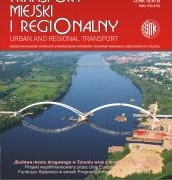 SITK RP
SITK RP 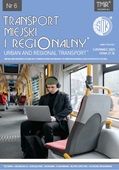 SITK
SITK 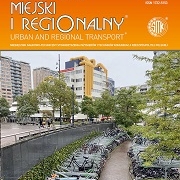 SITK RP
SITK RP 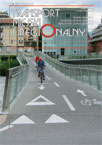 SITK RP
SITK RP 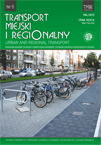 SITK RP
SITK RP 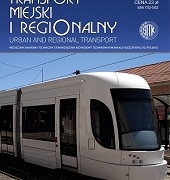

 SITK RP
SITK RP SITK RP
SITK RP